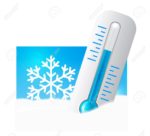Koi and Pond Quick- Facts
Koi Information Tid-Bits
- Test your water, especially for ammonia, nitrite, kH, and pH. See The Science of Water
2. Always keep a hole in the ice in your pond in the winter. This lets air in, but primarily it’s to let hydrogen sulfide gas out. Hydrogen sulfide is created by decaying fish, plant and organic matter in the system. It can kill your fish quickly if you allow it to freeze over completely -even in as short a time as twenty four hours. You can keep a hole by leaving the waterfall running, or better yet, by adding an inexpensive low-wattage pond heater, airstone or pump at the surface. This heater is only designed to keep a hole open … not to heat the entire pond.
3. There is no need to feed your fish in winter. As the water cools below 50 DF the fish will eat less and less. At some point (usually around 45DF) the fish will stop looking for feed. They can then go all winter without it, until spring when the temps start rising again.
4. Feed less food of any protein level in Spring and Fall when temperatures are near 50 degrees. Contrary to what you may have heard, there is no need to change types of feed/proteins in Spring and Fall.
5. During warmer temperatures, only feed your fish enough food that they can consume in 1-2 minutes if they are feeding aggressively. Your goal is to not have food left over to decay in the water and not to feed more food than your filter can process.
6. Always cover tanks or ponds when adding new Koi. They tend to try to jump out for the first 24 hours or so. You could also float small Styrofoam boards on the water surface to discourage jumping. After 24 hours or so the fish should be acclimated to the new water enough so that you can remove the cover.
7. All fish can carry parasites and possibly even low-level viral and bacterial infections. The key is to keep great water quality, and the fish’s immune system will keep the diseases at bay in most cases. See About Koi Pathogens.
8. Learn to keep great water quality and your fish will have a better chance to stay healthy and live long. See “The Science of Water”
9. When checking pH, do it twice daily. Checking once in the early morning and once in the evening is ideal. You are checking to find out the difference between the two readings more so than the actual pH itself. However it is more critical to check and maintain your kH and this will control your pH and therefore you do not need to check the pH often See “The Science of Water”
10. Get the gunk/muck out of your system as often as possible. More gunk can lead to more health problems.
11. Know the exact gallonage of your pond! This is critical when doing water treatments and medications. See “Koi Treatments” on ways to do this exactly.
12. Test your water, test your water, test your water!!! See “The Science of Water”
13. Quarantine all new fish for at least two weeks before introducing them into your pond. Preferably, quarantine new arrivals with one of your existing fish, both for the company and for other reasons. See See About Koi Pathogens.
14. Did I mention that you should test your water regularly?
16. It is a general rule of thumb to have at least one cubic foot of filter and filter media for every 100 gallons of pond water. You must also make sure your media is suitable to aid biofiltration.. See The Science of Water for more details
17. Your fish will usually let you know if there are any problems, whether it be water quality or illness. There are symptoms they exhibit, both physical and body language. See Diagnosing Koi Symptoms.
18. Feed a quality food made for Koi specifically. See our catalog.
19. Treat all plants before adding them to your pond! See Adding Plants.
20. Never dump the water from the bag of new fish into your pond or quarantine tank. Dump the water on the ground while keeping the fish in the bag, then put the fish in the pond. See Proper Acclimation.
21. You must always acclimate fish when transferring them to new water. The new water and the old must be the same in temperature as well as chemically. See Proper Acclimation.
22. Vary Koi diets by giving them treats such as fresh spinach, orange slices, leaf lettuce, watermelon, and fresh green peas. I especially like to give them the orange slices due to the high vitamin C, which is very good for their color.
23. The hotter the water temperature gets, the less oxygen it can hold. Water above 90 degrees could be cause for concern, depending on your fish stocking levels and plant population. Plants put oxygen into the water during daylight, but at night they use what they’ve produced and more. This means aeration is more important at night than during the day, but I would aerate 24 hours a day.
24. You should clean your entire pond and system at least once a year, but once in the spring and once in late fall is better.
25. Sexing Koi
There are a few ways to sex Koi, but the most sure way usually is to milk them. The males will almost always show sperm when milked properly, and the females don’t of course. This is not as seasonal as most folks think. Sometimes (cold water) males won’t show sperm, but about 90% of the time you can milk it from them anytime of year, even Tosai at times that are close to a year old. Milking is difficult to explain in writing, but basically with the fish upside down you run your index finger and thumb down the side just above the lateral line and near the middle of the fish with some pressure, and curve up as you approach the vent area. When I say just above the lateral line, that is when the fish is upside down. If the fish were in the upright horizontal position you would actually be just below the lateral line in the lower third of the body. You will usually see the sperm come out and puddle at the vent. In or near prime spawning time, the sperm may actually squirt or run out of the vent.
To do this, I will usually put the fish in one of those blue show bowls. When I am ready to check the fish for sperm, I grab it and flip it upside down and hold it against the side of the tub to keep it more secure from wriggling. I then do as described above and run my finger and thumb horizontally down the side and then curve up towards the vent. This will actually squeeze the sperm right out of the vent.
Also you can tell males by the breeding tubercles on the gill plates. As I am sure you know, the males cheeks feel like sandpaper. This is not always easy to feel and is more prevalent in spring but always there anytime of year. They can be hard to feel due to the slime coat of the fish being too thick to feel them. After shipping, however, and due to very low pH in the shipping water, the slime coat gets stripped off and thinned to a degree, and the rough surface of the cheeks can more easily be felt. The same holds true after certain treatments like PP. Also, this will make you laugh, but sometimes when they are hard to feel, if you use the tip of your tongue you can feel then. Your tongue is much more sensitive than your fingers to feeling these small sandpapery spikes if you don’t mind licking fish LOL!
Also, the vents of males and females are usually different looking. Basically, the males can appear to only have one opening/hole in the vent area at times, even though there are actually two holes, or sometimes you will see two holes that look like dots like this .. So the vent of males looks like two dots/holes, and the females have a dot and a slash like this .) but the dot would be in the center of the slash mark. None of these methods are 100%, but using a combination of them you can sex them accurately. Body shape comes into play as well, but this is the least accurate method, especially when it come to Longfins, as many male Longfins can be shaped like females with that football shape.
Written by John Fornaro, Hanover Koi Farms. ALL RIGHTS RESERVED BY HANOVER KOI FARMS, COPYRIGHT © 2018


